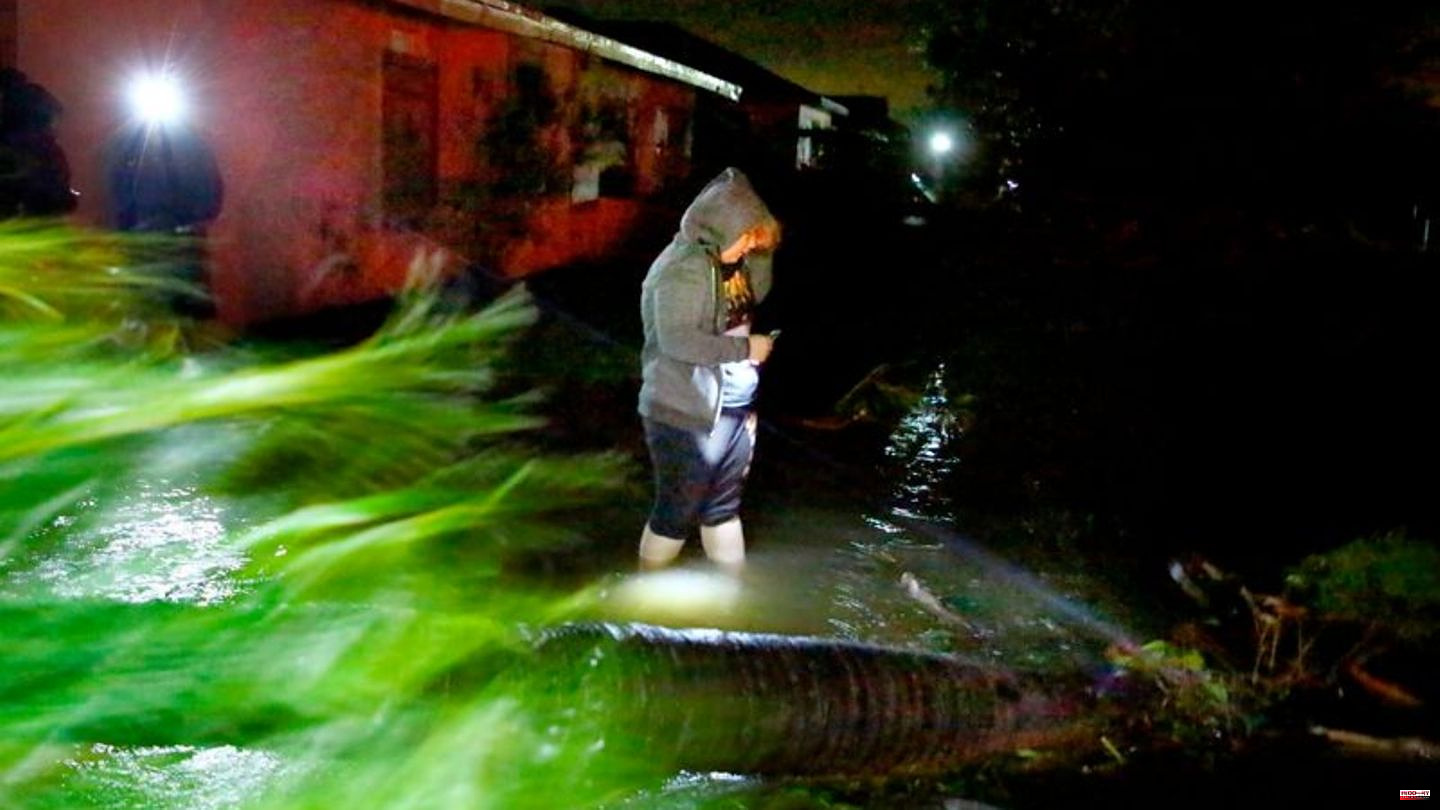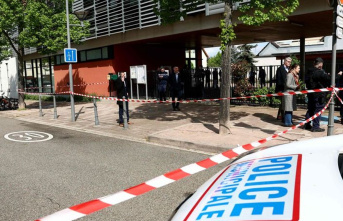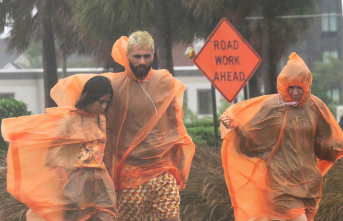Hurricane "Ian" hit the west coast of the US state of Florida with violent winds, rain and storm surges. With wind speeds of 240 kilometers per hour, "Ian" was just below the threshold for the highest hurricane category on Wednesday afternoon (local time). The storm then weakened as it made its way into inland Florida.
During the night of Thursday he reached wind speeds of up to 150 kilometers per hour. Meteorologists initially downgraded the hurricane to the lowest strength of one out of five.
Severe storms raged across a strip of land more than a hundred kilometers wide. Meteorologists continue to expect flooding from heavy rains. "Ian" is likely to make the list of the five deadliest hurricanes in Florida, said Florida Gov. Ron DeSantis. More than two million homes were temporarily without power during the night, according to the Poweroutage website. The extent of the destruction is not likely to become clearer until sunrise on Thursday.
Rain floods streets, debris flies through the air
According to meteorologists, the storm was about 110 kilometers south of Orlando during the night. It was only moving northeast across the country at a speed of around 13 kilometers per hour. That made it even more dangerous given the strong winds and rains. Television pictures showed rain lashing the streets, only the roofs of cars sticking out of the floodwaters and debris flying through the air.
Storm surges reached a height of around 3.5 meters, DeSantis said. Weather experts feared that they could grow more than five meters high at the top. The authorities expected serious damage to infrastructure and communication lines.
Residents were urgently warned not to leave their homes on Thursday morning to assess the damage, for example. Even if the hurricane pulls away, there is still a risk of debris, broken power lines and the like. Evacuation instructions applied to around 2.5 million people in the region. However, some of them chose to remain in their homes.
The center of the cyclone of magnitude four out of five hit the coast on Wednesday afternoon (local time) on the offshore island of Cayo Costa near the city of Cape Coral, as the meteorologists announced. "Ian" had previously gained strength over the Gulf of Mexico.
Sometimes meter-high floods
The first photos and videos on social media showed severe flooding in the cities of Fort Myers Beach, Cape Coral and Naples, some of which were several meters high.
DeSantis said authorities are standing by for salvage and repair work as soon as the weather permits. He wrote on Twitter that around 7,000 National Guard soldiers and 179 planes or helicopters could be deployed. In addition, more than 40,000 mechanics from the utility companies were already on hand to repair power lines. According to the US Hurricane Center, power outages resulting from the "catastrophic damage" of a category hurricane can last four weeks or months, and entire regions could be uninhabitable.
The director of the National Hurricane Center, Ken Graham, emphasized that it will probably take 24 hours after arriving on land for the hurricane to pass over Florida. That means 24 hours of heavy rain.
Deanne Criswell of the US Disaster Management Agency FEMA said the region expected to be affected by the storm had not experienced such a hurricane for around 100 years. Experts are also concerned that in the past few decades the region has been built closer and closer to the water.
Guterres: Another example of dramatic climate action
UN Secretary-General António Guterres called "Ian" "another example of dramatic climate action we are seeing around the world with increasing frequency and increasing devastation."
According to the meteorologists, "Ian" will initially continue to move over Florida. The storm will reach the Atlantic on Thursday before likely moving north towards the US states of Georgia and South Carolina.
"Ian" made landfall in Cuba on Tuesday as a category three of five hurricane. In the state with a good eleven million inhabitants, the power went out at times across the country. Meanwhile, a boat carrying migrants from Cuba sank off the coast of Florida on Wednesday. The US Coast Guard was initially looking for 23 people, as announced on Twitter. Three were saved. Four migrants had previously reached American Stock Island off Key West by swimming from the boat in stormy weather conditions.












